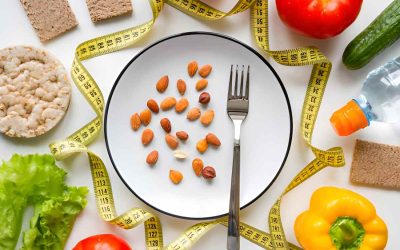Pilates and Barre Exercises Exposed
Pilates is a low-impact exercise program that develops core Graceful Strength, flexibility, and balance. The exercises focus on controlled movements and deep breathing to activate the abdominal muscles. Pilates routines can be achieved on a mat or using machines such as reformers and Cadillacs.
The practice consists of exercises designed to strengthen and tone the body, especially the abs, back, thighs, and glutes. Ballet training inspires barre workouts, combining Pilates, yoga, and strength training. Ballet barre exercises focus on toning and shaping the body using short, isometric movements. High-repetition movements that strengthen the arms, legs, abs, and glutes are a staple in most barre workouts.
The program also includes exercises to improve posture and balance. Benefits of Pilates and barre workouts include improved posture, increased Graceful Strength and flexibility in specific muscle groups, reduced stress through mindful movement practices such as deep breathing techniques, and reduced stress on joints due to the low-impact nature of the workouts.
To begin, what is Pilates?
Pilates is a low-impact exercise that emphases on strengthening the core muscles. This exercise style has gained widespread popularity since its creation in the 1920s by Joseph Pilates. It emphasises controlled movements to improve flexibility, core strength, and overall physical well-being.
The principal value of Pilates is its ability to improve posture. The exercises help correct postural problems, which can relieve back pain. Pilates also promotes flexibility, balance, and overall physical well-being.
Pilates can be done without equipment, using only your body weight as resistance, but there are many additional equipment to increase the intensity. Examples of such equipment include resistance bands, stability balls, and reformers. Pilates is an excellent low-impact method for developing strength, flexibility, and balance.
Method of strengthening the abdominal muscles
Core Graceful Strength can be developed through Pilates or Barre. Pilates exercises focus on consolidation the core muscles, focusing on the abs, back, thighs, and buttocks. The deep abdominal muscles are worked through slow and precise movements. According to Dr. Pankaj Kumar, a leading nutritionist in Dwarka, diet plays a crucial role during these exercises.
Pilates also often uses the plank, which requires significant abdominal muscle effort to maintain proper form. Inspired by ballet and dance, barre exercises involve isometric holds and small, precise movements to strengthen specific muscle groups. Many barre exercises, including plank variations and slow, controlled movements, require strong core activation to maintain balance and stability.
Resistance bands or light dumbbells are sometimes used to increase the difficulty of barre classes further. Consistency is the key to attaining the finest results, whether you choose Pilates or Barre to strengthen your core. Integrating these workouts into your daily tedious can Graceful Strength your core, increase litheness, and improve your posture.
When asked, “What is Barre?”
Barre is a low-impact fitness program combining ballet, yoga, and Pilates. Small isometric movements target specific muscle groups while holding a barre or stationary handles. This program aims to work long, defined muscles while strengthening and toning the body.
Most barre classes begin with a short warm-up to get the blood smooth and prepare the muscles for the workout. Most of the class is devoted to working different body parts, such as the arms, legs, glutes, and core. These programs use light weights or just your body weight. Slow, precise movements ensure a full muscle workout.
Dance-inspired moves like plié and relevé are often included in barre workouts, which sets them apart. Barre’s emphasis on form and alignment can also help correct posture issues. Overall, Barre is a great full-body workout that can be adapted to suit anyone from beginner to seasoned pro.
Yoga, Pilates, and other forms of dance fused
Combining ballet, yoga, and Pilates can improve strength, flexibility and balance. Ballet’s emphasis on gentle movement promotes body awareness. Meditative breathing practices, an integral part of yoga, encourage relaxation, focus and a more flexible body.
Pilates is a great way to strengthen your core muscles, essential for maintaining good posture. It is a popular and widely available exercise routine taught in various classes. Its low-impact nature makes it ideal for those recovering from an accident or simply wanting to prevent further damage to joints and bones while improving overall fitness.
It is a great way to exercise without putting too much stress on your body. Better sleep, improved digestion, reduced stress and, as a result, greater mental clarity and reduced anxiety are just some of the health benefits that can be gained by combining these three practices. With this practice, you will be able to achieve your fitness goals, which will also positively impact your mental and emotional health.
Pilates and Barre Exercises: Their Many Rewards
Pilates and Barre are great ways to improve your health and fitness. Pilates is a low-impact workout that emphases on improving stability, mobility, coordination, and increasing muscular endurance. Improve your posture and spinal alignment with these carefully choreographed exercises.
Barre workouts are very similar: low-impact routines that combine elements of ballet, yoga, and Pilates. Stability and balance exercises typically involve a series of very short movements that target specific muscles. Pilates and Barre can improve cardiovascular fitness.
With an emphasis on breathing during each movement, they also relieve tension. Because they are flexible, these programs can be tailor-made to suit the needs of persons of all ages and fitness levels. Incorporating Pilates or Barre into your workout routine can improve your health and well-being.
Enhanced body awareness, strength, balance, and mobility
Strength and flexibility exercises like Pilates and Barre do wonders for your body. Pilates is great for strengthening your core and your entire body. This results in stronger muscles stabilising your spine, improving your posture.
Pilates’ emphasis on stretching multiple muscle groups at once also helps. Barre workouts combine elements of both classical ballet and Pilates. Barre exercises are beneficial because they force you to stand on one leg for long periods, which is excellent for developing strength and stability in your ankles and feet. It’s the smaller, often overlooked muscles of the core that Barre focuses on for overall strength.
Exercises like Pilates and Barre can be modified to suit the needs of people of all ages and fitness levels. With consistent effort, these programs can help anyone achieve their fitness goals by developing strength, balance, flexibility, and posture.
Pilates and Barre: A Beginner’s Guide
Pilates and barre exercises are popular for their positive effects on flexibility, strength, and posture. You may feel out of place the first time you try one of these workouts. Below you will find instructions on how to get started with Pilates and Barre.
- Find a trusted trainer: A professional trainer will ensure your workout correctly and safely.
- Make sure your clothes are loose enough, but not too baggy.
- Choose the right shoes: Supportive socks are ideal for Pilates, while ballet flats or similar shoes can be suitable for barre classes.
- Please don’t overdo it initially; take beginner classes and progress as your strength increases.
- Watch your posture. In both Pilates and Barre, it is essential to maintain good posture at all times.
- Pay attention to your body: if something hurts or doesn’t feel right, stop and talk to your trainer.
- Regular practice is better than sporadic practice for reaping the benefits of these exercises.
- Building strength, flexibility, and endurance takes time, so be patient when doing Pilates or Barre.
Following these tips will make you a professional Pilates and barre instructor quickly!
Joining a club or taking lessons online
Finding a studio or online class can be a game-changer in your fitness journey if you’re interested in Pilates or barre training. By joining a studio, you’ll get personalised recommendations from an experienced instructor and meet others who share your passion for fitness.
You can try out different classes at a studio before committing to a full-time workout, as many offer trial packages. However, online courses are easy and flexible. They allow you to work out at your own time, from the comfort of your home. The wide variety of class formats and instructors gives you more options to customise your workout.
However, self-motivation is essential with online classes, as no instructor guides you through every move. Whether you choose to do a studio or online class is a personal preference. Researching and getting feedback from others before choosing a program or instructor is essential to ensure it’s right for you.
Pilates and Barre Exercises: How to Succeed
First and foremost, be consistent.
Consistency is one of the keys to achieving results in Pilates and Barre classes. Strength, flexibility, and muscle memory can be improved through consistent training. Try to attend lessons at least twice a week, if not more often. If you can’t participate in a class, you can practice via video or with a private teacher.
The Second Tip: Correct Form and Technique
Proper form and technique for performing Pilates and Barre exercises will help you get the most out of Pilates and avoid injury. Follow your instructor’s instructions for correct posture, alignment, breathing, and movement. To prevent injury and achieve perfect form, start with light weights or bands and gradually increase them.
Use a Wide Range of Methods
Varying your workouts will prevent boredom and help you overcome plateaus—experiment with different workouts, from traditional mat Pilates to high-intensity barre workouts. Use a stability ball instead of a mat or add ankle weights for extra resistance and interest. Remember: every effort in the gym will bring you closer to your goals if you continually challenge yourself.
Goal-setting, regularity, and bodily awareness
Achieving your fitness goals with Pilates and Barre requires goal setting, consistency, and body awareness. The first step to achieving any goal is to have a plan. Simple goals include exercising two to three times a week, learning a new skill, or reaching a new level of flexibility. Consistency is also essential.
Strengthening the mind-body connection and building the endurance and strength needed for more complex movements is achieved by committing to regular exercise. Avoid overloading your body by suddenly increasing the difficulty or duration of your workouts. When doing Pilates or barre exercises, paying attention to your body is essential.
Unlike high-intensity cardio, which primarily focuses on burning calories, low-impact workouts focus on optimal body positioning, breathing technique, muscle activation, and movement control. Pilates and barre workouts, which promote body awareness throughout the movement, help us identify where we need to pay more attention or adjust our program when working too hard.




